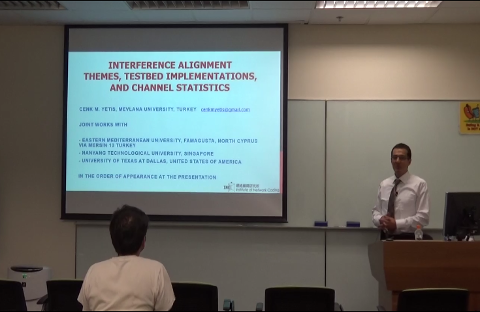
In this talk, a collection of recent research activities of the speaker is briefed. The talk begins with reviewing 1) network coding from interference alignment (IA) perspective, continues with presenting 2) IA applications in heterogeneous networks (HetNets), then discussing 3) quality of service (QoS) of IA, perusing 4) blind IA techniques over relay networks, and surveying 5) IA testbed implementations and pointing necessary footsteps for bringing IA closer to real life implementations. The talk is finalized with 6) the second order channel statistics of multi-user communications including average outage duration (AOD) and level crossing rate (LCR) metrics which reflect the dynamic nature of wireless transmissions better than static metrics such as bit error rate (BER), and the connections of these metrics with IA are screened.
Cenk M. Yetis received the B.Sc. degree in electronics engineering from Isik University, Istanbul, Turkey, in 2001, the M.Sc. degree in telecommunications engineering from Istanbul Technical University (ITU), in 2004, and the Ph.D. degree in Satellite Communications and Remote Sensing from ITU in 2010. He received The Scientific and Technological Research Council of Turkey (TUBITAK) scholarship from 2005 to 2009. From 2003 to 2007, he was with Avea, one of the top three wireless services providers in Turkey, where he held rotational responsibilities in operation and planning groups. From 2007 to 2010, he was a visiting researcher at Ohio State University and the University of California, Irvine. From 2010 to 2012, he continued his academic career as a Postdoctoral Fellow in Hong Kong University of Science and Technology, and Nanyang Technological University. In 2012, he joined Mevlana University as an Assistant Professor with the Department of Electrical and Electronics Engineering. His research interests include signal processing, information theory, communication theory, and optimization theory for wireless communications.
